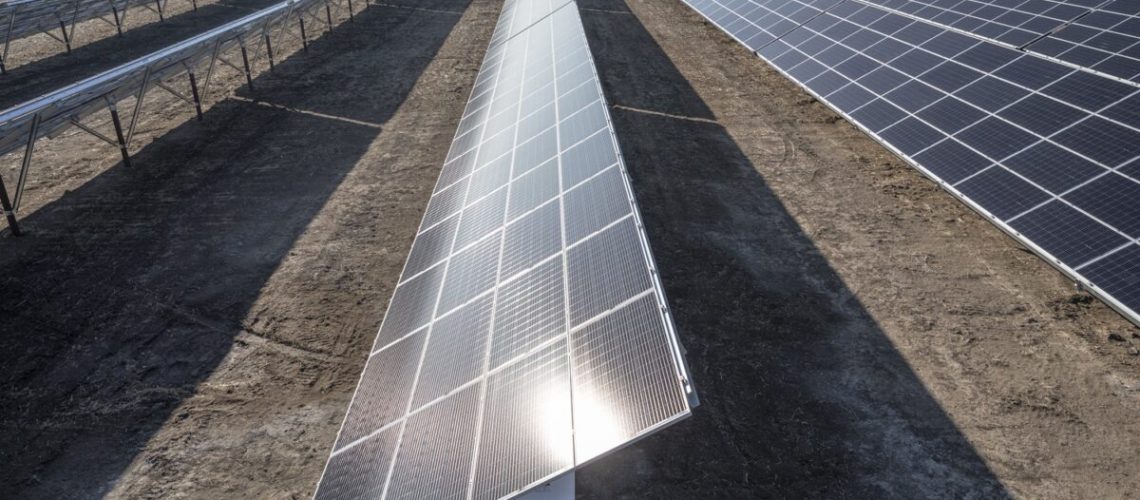First PV project from Tri Global portfolio will be one of the largest in North America.
The 815 MW Sequoia Solar project located about 150 miles west of Dallas, Texas is shaping up as one of the largest photovoltaic power facilities in North America.
Under development by Calgary, Alberta-based energy provider Enbridge, the $1.1 billion project is scheduled to come online in two phases, with the first 400 MW installment entering commercial operation at the end of 2025 and the rest in 2026.
Sequoia Solar has two major off-takers, Toyota and AT&T, that have signed long-term, fixed-price virtual power purchase agreements for most of the electricity generated.
Thomas Carbone, Enbridge vice president of power business development, told pv magazine USA that the scale of Sequoia Solar and its relatively rapid development pace is due to groundwork laid prior to the company’s acquisition of Texas-based Tri Solar Energy in 2022, which included the project in its 7 GW wind and solar portfolio. Carbone, who had been president of Tri Global prior to the acquisition, said they had done all the permitting, arranged for the environmental studies and provided for the interconnection work.
“One of the keys for the Sequoia Solar site was Lone Star Transmission’s new Reata substation,” Carbone said, citing its new 345-kV double-circuit transmission lines. “It just is a perfect location for implementing a major solar project.”
Interestingly, the 8,000-acre site was originally conceived as a wind project. However, the presence Dyess Air Force Base in Abilene about 35 miles away meant that they probably were not going to be able to secure the the air rights for wind turbine towers. At the same time, the base was far enough away that perceived sun glare from solar panels was not considered a problem.
Carbone pointed out that another advantage of the site was that there were a limited number of landowners involved. Moreover, the mineral rights situation, which can be complex under Texas law, was relatively straightforward.
“In Texas, mineral rights can be highly fragmented,” he said. “You can have hundreds of mineral owners on your project. In this case, there was also a limited number of mineral owners, so it’s perfect development for solar.”
The Sequoia Solar project is the first of the Tri Global portfolio to reach the construction stage under Enbridge. According to Carbone, the combination of the two companies has helped Sequoia Solar’s advance. In addition to its renewable energy projects, Enbridge has experience building linear pipelines, which end up having a lot in common with wind and solar projects in terms of construction, environmental work, managing landowners and outreach to the community.
“At the same time, we at Tri Global had interconnection knowledge,” Carbone said. “How to pursue interconnection studies and how to get projects all the way through the process to the interconnection agreement, and then managing build out of the interconnection facilities with the transmission provider. Part of our interconnection agreement is that we are contributing to a pretty significant build out of the Reata substation.”
Enbridge has contracted with Rosendin Electric for engineering, procurement and construction on the Sequoia Solar project. According to Carbone, Rosendin has been on the site since last December and has advanced to the installation phase.
The project will use Runergy solar panels. Those for the first phase of the project are in the U.S. having cleared customs this past summer. The panels for the second 415 MW phase will come from Runergy USA’s factory in Huntsville, Alabama. Nextracker is providing its Horizon single-axis trackers for the entire project. Inverters will come from Sungrow.
Conspicuous by its absence, perhaps, is any provision for long-term energy storage. Carbone said storage has not been a requirement because the majority of the energy produced is under virtual PPAs. While off-takers Toyota and AT&T have business operations in Texas, they won’t be consuming the actual electrons from Sequoia Solar.
“At this stage of the game, we have not yet built the business case for storage, although that may change, “Carbone said. “One of the largest data centers in the country is being built in Abilene, which, if fully built out, will draw nearly a gigawatt. So, over time you may see a business case for storage.”



